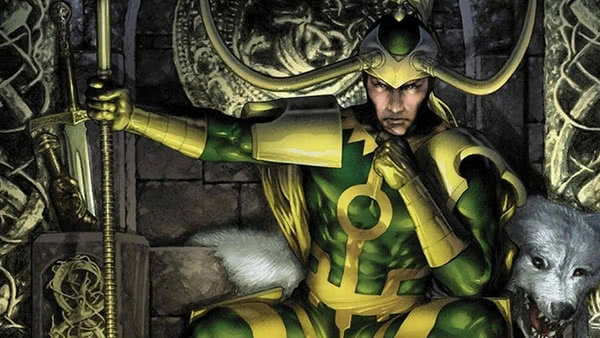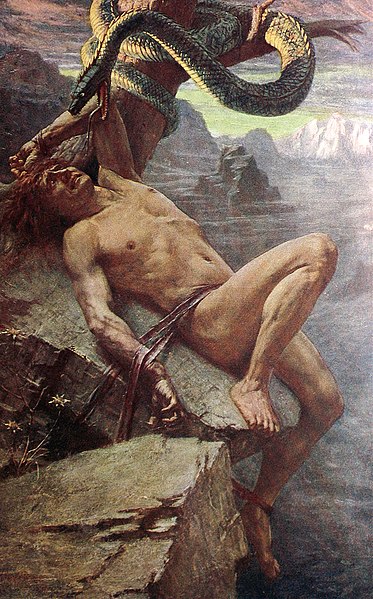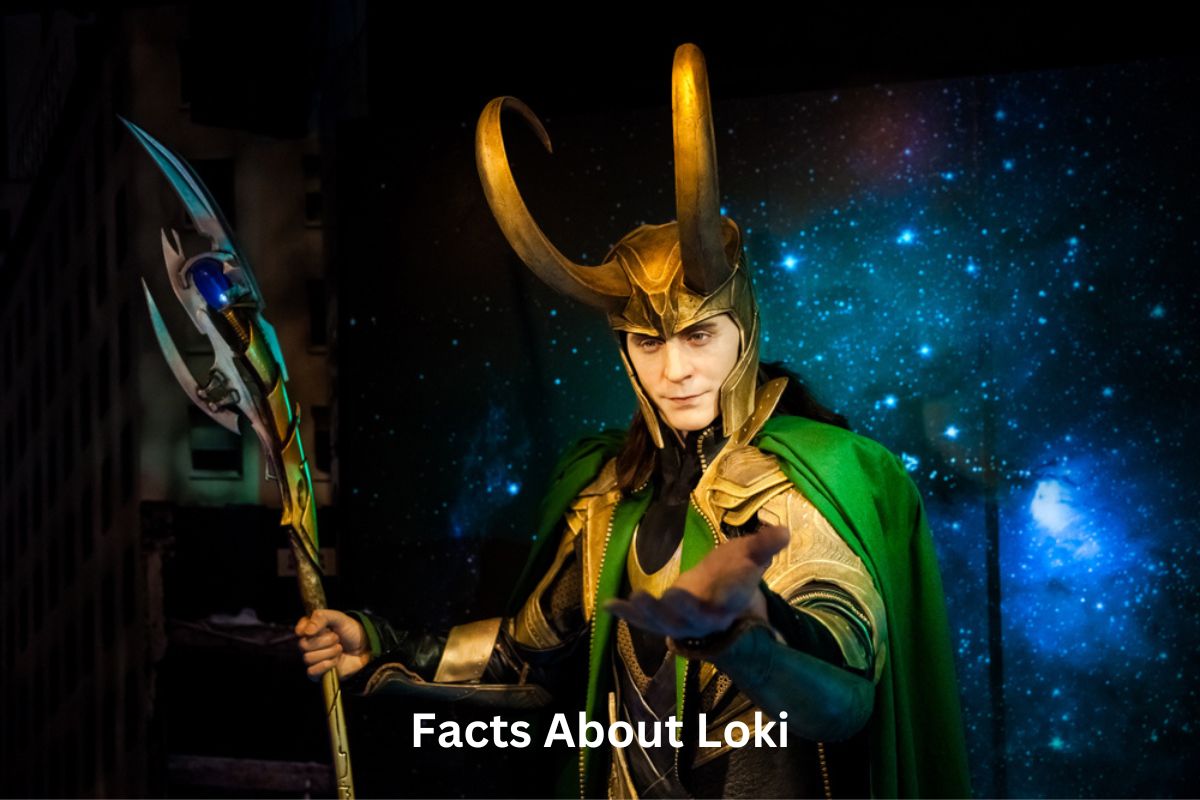Loki is a prominent figure in Norse mythology, known as the god of mischief and trickery.
His complex character defies traditional divine roles, as he is both a member of the Aesir, the principal gods, and a Jotun, a giant.
Loki’s reputation is defined by his cunning, shape-shifting abilities, and knack for causing chaos among the gods.
He is the father of monstrous offspring, plays a central role in the events of Ragnarok, and has left an indelible mark on popular culture, particularly through adaptations in comics and film, where he is often portrayed as a charismatic antihero.
Loki Facts
1. Norse god of mischief and trickery
Loki is a prominent deity in Norse mythology, where he is often described as the god of mischief, deceit, and cunning. His name is derived from the Old Norse word “logi,” which means “fire” or “flame,” reflecting his unpredictable and fiery nature.
Also Read: Facts About Odin the Norse God
While Loki is a god, he does not fit the typical image of a benevolent deity. Instead, he is a complex character known for both his cunning and his capacity for chaos. His actions often lead to unpredictable consequences for the other gods and creatures in the Norse cosmos.

2. Shape-shifter and master of disguise
One of Loki’s most remarkable abilities is his skill as a shape-shifter. He can change his appearance and take on the form of various animals, objects, or even other beings. This power allows him to deceive and manipulate those around him.
Also Read: Hel Goddess Facts
Loki’s shape-shifting abilities are not limited to physical transformations; he can also alter his voice and mannerisms, making him a master of disguise and impersonation. This talent is often employed to carry out his mischievous schemes or to aid the gods when it suits his interests.
3. Son of giants Farbauti and Laufey
Loki’s parentage is somewhat unconventional in Norse mythology. He is the son of Farbauti, whose name means “Cruel Striker” or “Dangerous Hitter,” and Laufey, whose name translates to “Leafy” or “Needle-Lady.” Both of his parents are giants (Jotnar), which is a distinct race from the Aesir, the primary group of Norse gods.
As a result of his giant heritage, Loki is sometimes referred to as “Loki Laufeyjarson” or “Loki Farbautison” to denote his lineage. This unique background contributes to his complex relationship with the Aesir, as he is both an ally and a source of trouble for them.
4. Notorious for playing pranks on other gods
Loki is renowned for his mischievous and often malevolent behavior among the gods of Norse mythology. He has a penchant for playing tricks and pranks on the Aesir and other divine beings, leading to various conflicts and disputes.
One of his most famous pranks involved cutting off the golden hair of Sif, the wife of Thor, and then replacing it with even more beautiful hair made of gold. This act angered Thor, and Loki had to find a way to make amends.
5. Father of Jormungandr, Hel, and Fenrir
Loki is the father of three significant and powerful offspring, all of whom play crucial roles in Norse mythology:
- Jormungandr: Also known as the Midgard Serpent, Jormungandr is a colossal serpent that encircles the Earth and is a harbinger of doom during Ragnarok, the Norse apocalypse.
- Hel: Hel is the ruler of Helheim, the realm of the dead in Norse mythology. She is often depicted as half-dead and half-living, representing the duality of life and death.
- Fenrir: Fenrir is a giant wolf, the son of Loki and the giantess Angrboda. He grows to be so immense and powerful that the gods are forced to bind him, and he ultimately plays a pivotal role in the events of Ragnarok.
6. Blood brother of Odin
Loki and Odin, the Allfather and chief of the Aesir, share a unique bond as blood brothers. In a symbolic ritual, they mixed their blood together, forging a deep and unbreakable connection.
This blood brotherhood represents an unusual alliance between two figures from different backgrounds. It is a gesture of trust and camaraderie, despite Loki’s unpredictable nature and tendency to stir up trouble.
7. Stole Thor’s hammer, Mjolnir, in a famous tale
In one of the most famous Norse myths involving Loki, he steals Thor’s mighty hammer, Mjolnir. Loki’s motive for this act of mischief varies in different retellings, but it often involves a desire for mischief or as part of a scheme to obtain something valuable.
To retrieve his stolen weapon, Thor enlists the help of the other gods, and Loki is eventually forced to return Mjolnir. This incident highlights Loki’s ability to cause turmoil among the gods and the need for his cunning to be curbed.

8. Punished by being bound to a rock with venomous serpent above him
Loki’s actions eventually catch up with him, and he faces severe punishment for his role in causing the death of Baldr, one of the beloved gods. The Aesir bind Loki to a rock using the entrails of one of his sons.
Over Loki’s head, they place a venomous serpent that drips its venom onto him. Loki writhes in pain, and his wife, Sigyn, tries to collect the venom in a bowl to ease his suffering, but when she has to empty it, the venom drips onto Loki, causing earthquakes.
9. Central figure in the Norse apocalypse, Ragnarok
Loki plays a central and antagonistic role in the events of Ragnarok, the prophesized end of the Norse world. He leads an army of monsters and chaotic forces against the Aesir and the order of the cosmos.
During Ragnarok, Loki’s offspring, including Jormungandr, Hel, and Fenrir, all play crucial roles in bringing about the cataclysmic events that lead to the world’s destruction and rebirth.
10. Popular character in literature, comics, and modern media, including the Marvel Cinematic Universe
Loki’s character has had a lasting impact on popular culture and media. He is a complex figure often portrayed as an antihero or a trickster with charismatic qualities.
In modern adaptations, such as in Marvel Comics and the Marvel Cinematic Universe, Loki is portrayed as a compelling character with a mix of mischief, charm, and complexity. Actor Tom Hiddleston’s portrayal of Loki in the Marvel films has contributed significantly to the character’s popularity and iconic status.
